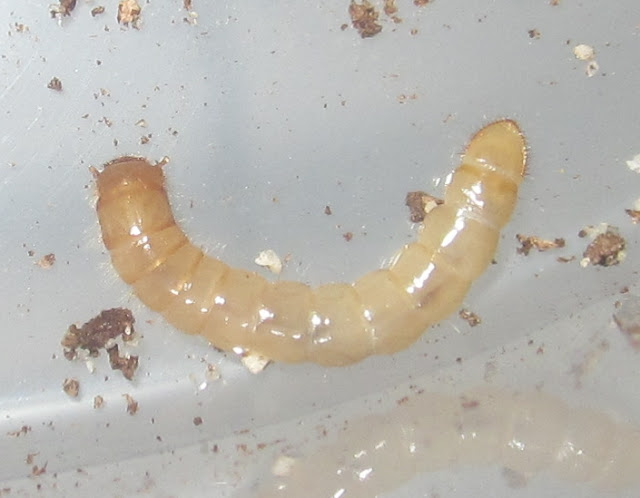Anyways, here are some pictures of one of my largest individuals:
This still isn't full size for this species, but this one's still the largest conglobating isopod I've seen in person. 😍
I FINALLY started getting eggs and larvae from my Cryptoglossa infausta! Seems pure fine clay does not work as an oviposition medium for this species, a mix of clay, sand and old Panesthiinae substrate did the trick though (and has also seemed to help reproduction improvement with my C.muricata as well). The larvae are pretty typically looking for Cryptoglossini, but still, I figured I'd get pictures of confirmed C.infausta larvae, something that hasn't really existed until now.
Without further delay, here are those pics:
Hopefully I'll be able to rear some to adulthood, we'll see!
Now, my Cubaris sp. "White Ducky" have not been breeding that well for me at all, with very very infrequent broods and minimal mancae survival rates, despite me keeping them as is typically recommended for this species. I'm pretty sure I figured it out though; I was keeping them too cool, and possibly not ventilated enough.
I tossed one female in as a test into an old roach bin (with some excess Hebardina males and stowaway Compsodes still inside), and she gave birth pretty quickly afterwards. The resulting offspring have been thriving, so I bit the bullet and threw the rest of my colony into that roach bin. Since then, at least one or two more litters have been born, and the mancae from the older broods are growing very quickly. Apparently heat and high ventilation are key for this species, and I'm realizing a lot of isopods in general seem to handle it pretty warm, if not prefer it warm. But having high ventilation seems crucial in warmer temps, otherwise they can die rapidly.
Lastly, another isopod update, one of my Porcellio magnificus females gave birth this week, and another female looks super gravid! These things are very slow breeders, but at least they give birth to decent sized broods. 😅
Anyways, that's gonna do it for this post, thanks for reading, hope everyone enjoyed, stay safe, and I'll see you all next time! 😉










No comments:
Post a Comment